Sharing is caring!
This Vegan Tofu Adobo or Adobong Tokwa is a vegan take on the classic Filipino dish, that’s commonly cooked using chicken or pork. This version uses tokwa, which is tofu in Filipino that I sliced into cubes and pan-fried to crisp before cooking down adobo-style. It’s packed full of flavour with the tofu acting like sponges and absorbing all the flavour. You can’t pass off on rice with this dish!
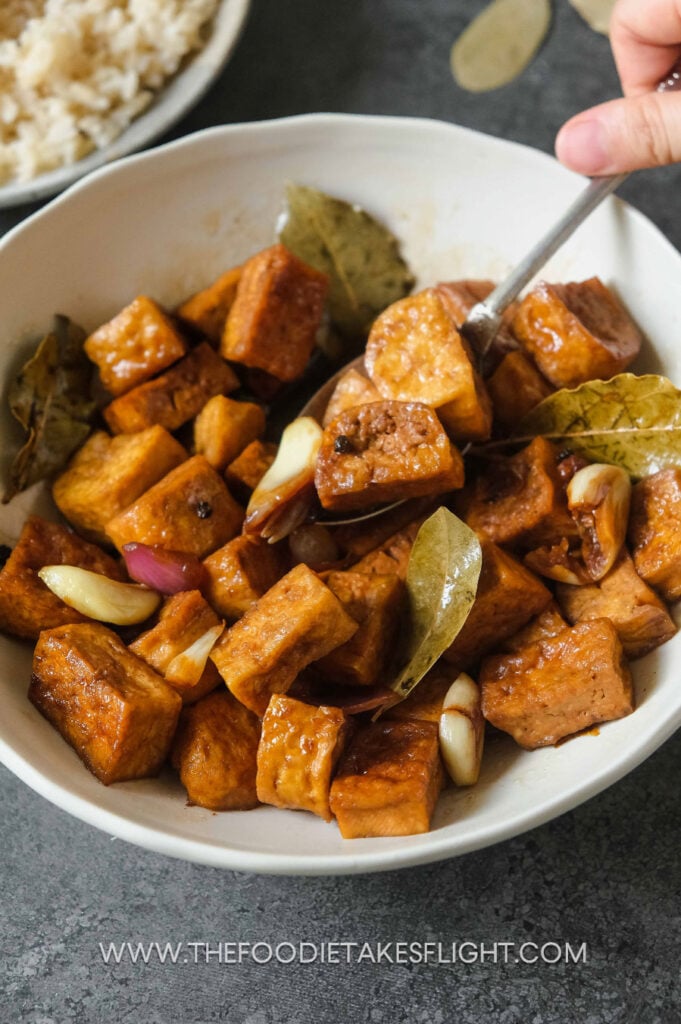
Each family probably has their own take on it based on their preferences. So when cooking this, feel free to adjust the seasonings to your desired taste and see what you like from there!
WHAT IS ADOBO?

Adobo probably one of the most popular Filipino dishes.
Adobo is actually a way of cooking and there are various adobo dishes depending on the main protein/ingredients. Growing up, the most common type of adobo we’d have at home was a classic Pork Adobo or a Chicken Adobo.
These are usually made with pork liempo or pork belly with generous amount of fats in the cut that are cooked with whole peppercorns, bay leaves, lots of onions & garlic in a savoury and sour sauce with a little sweetness from sugar.
OTHER FILIPINO ADOBO DISHES
There are also a lot of types of adobo throughout the Philippines ranging from Adobong Manok (Chicken Adobo), Adobong Pusit (Squid Adobo), Adobong Kang Kong (Morning Glory Adobo), and one of the most common—Adobong Baboy (Adobong Baboy).
There are really so many ways adobo is cooked. Some like to add carrots and potatoes (the latter, we love to add to ours at home) since potatoes absorb flavours really well. We also sometimes like to add fried tokwa or extra firm tofu, that act as sponges and absorb the sauce really well too.

WHAT DOES ADOBO TASTE LIKE?
Adobo is predominantly savoury with a kick of acidity from the vinegar and can have a sweet note from the sugar.
It’s really a personal preference how you want your adobo to taste like but a traditional Filipino adobo usually has acidity from the use of vinegar. At home we have a few versions of adobo.
One version is a classic Filipino adobo with more or less equal portions of soy sauce and vinegar for a good savoury and sour kick.
Another versions is more of a Chinese-style adobo, that’s on the sweeter side. Chinese-style adobo we cook at home uses soy sauce with lots of sugar so it’s a lot sweeter. A sweet Chinese-style adobo is my sister’s favourite and she prefers this over a classic Filipino adobo.
There’s really no one-size-fits all recipe to an adobo since there are many different ways adobo is cooking in the Philippines and each family has their own take on it based on their preferences. So when cooking this, feel free to adjust the seasonings to your desired taste and see what you like from there!
See below a version of adobo made with soy chunks and with some diced potatoes! You can check out the recipe here.

THE SOY SAUCE & VINEGAR COMBO FOR ADOBO
Adobo won’t be adobo without the classic soy sauce and vinegar combo. These are essential ingredients in Filipino cuisine and we buy these by the gallons since we use soy sauce and vinegar (toyo at suka) in almost everything.
My mom also likes to add some sugar in adobo, to balance out the acidity. Photographed above is some coconut sugar but brown sugar works great too.

THE SPICES, ONIONS, AND GARLIC
Whole black pepper corns add a little kick of spice (especially when you get to bite into these!) and bay leaves (laurel leaves as we call them in the Philippines) that add that somewhat minty-like layer of texture, perfect for hearty dishes such as adobo.
I always keep a jar of dried bay leaves on hand since they’re used in a lot of other dishes too.
Oh and, lots go onions and garlic too!

TOFU OR TOKWA
Tokwa is Filipino for tofu. For this recipe I’m using extra firm tofu for the best texture and bite.
OPTION: FREEZING TOFU
You can opt to freeze your tofu. This creates a meatier texture. No need to press the tofu before freezing.

You can also freeze the tofu in its original packaging.
To freeze tofu before cooking: No need to press your tofu. I froze a whole block overnight on a tray because I slice the large blocks into slabs and then left this to completely thaw in room temperature before slicing into 1.5-inch cubes. Make sure to press your tofu well to get rid of excess liquid.
To prepare the tofu for this adobo: pan-fry or deep fry the tofu cubes in neutral oil until golden brown and crisp throughout.


COOKING THE TOFU ADOBO
- Move the tofu to the side of the pan. If you want to lessen the oil, feel free to remove some from the pan. But be generous with the oil since adobo is traditionally quite fatty in the sauce from the cooked down meat (especially if using pork belly).
- Add in the onions, garlic, and whole pepper corns. Leave the garlic and onions to cook until tender, around 3-4 minuets.
- Add the bay leaves, soy sauce, vinegar, and vegetable broth. Mix well and leave to simmer over medium heat until it comes to a boil.
- Add in sugar and dark soy sauce, if using. Taste the sauce and feel free to adjust to your taste. You can add more soy sauce for saltiness, vinegar for more acidity, or sugar for a hint more sweetness. This is really depending on your desired taste. I love a nice kick of acidity for my adobo that’s greatly balanced with some sugar.
- Leave the tofu to cook in the sauce for 10-12 minutes or until the sauce has reduced. The longer the tofu sits in the sauce the tastier it gets because tofu absorbs the sauce really well (like a sponge!)



SERVE AND ENJOY THE ADOBO
- Serve and enjoy your adobo with some Sinangag (Fried Garlic Rice) –homemade recipe here or plain rice. Enjoy!

OTHER FILIPINO RECIPES YOU MIGHT LOVE:
- Tokwa’t Baboy
- Filipino Kaldereta or ‘Meat’ Stew
- Mushroom Tocino
- Filipino Fried Garlic Rice
- Filipino Lumpiang Gulay or Fried Vegetable Spring Rolls
- Filipino “Pork” Barbecue
- Crispy Tofu Sisig
- Tofu and Mushroom Salpicao
- Bola-Bola (Filipino Meatballs)
Filipino Tofu Adobo (Adobong Tokwa)
Ingredients
- 450 g extra firm tofu or tokwa
- 3-4 tbsp neutral oil see notes
- 12 cloves garlic (or more if you’d like!), crushed and peeled
- 1 medium red onion sliced into squares
- 1/2 to 1 tsp whole pepper if you love whole pepper corns, feel free to add more!
- 4 dried bay leaves or laurel leaves
- 2-3 tbsp soy sauce (see notes if gluten-free)
- 2-3 tbsp distilled white vinegar
- 3/4 cup vegetable broth or stock
- 1 tsp dark soy sauce
- 1/2-1 tbsp sugar adjust to taste (I used coconut sugar)
To Serve
- Sinangag (Filipino Fried Garlic Rice)
- Plain Rice
Instructions
- Press your tofu to remove excess water. Slice into cubes or shape of your choice.
- Heat a large non-stick pan or skillet. Add a generous amount of oil. Pan-fry or deep fry the tofu in neutral oil until golden brown and crisp on all sides.
- Move the tofu to the side of the pan. If you want to lessen the oil, feel free to remove some from the pan. But be generous with the oil since adobo is traditionally quite fatty in the sauce from the cooked down meat (especially if using pork belly).
- Add in the onions, garlic, and whole pepper corns. Leave the garlic and onions to cook until tender, around 3-4 minuets.
- Add the bay leaves, soy sauce, vinegar, and vegetable broth. Mix well and leave to simmer over medium heat until it comes to a boil.
- Add in sugar and dark soy sauce, if using. Taste the sauce and feel free to adjust to your taste. You can add more soy sauce for saltiness, vinegar for more acidity, or sugar for a hint more sweetness. This is really depending on your desired taste. I love a nice kick of acidity for my adobo that’s greatly balanced with some sugar.
- Leave the tofu to cook in the sauce for 10-12 minutes or until the sauce has reduced. The longer the tofu sits in the sauce the tastier it gets because tofu absorbs the sauce really well (like a sponge!)
- Serve and enjoy your adobo with some Sinangag (Fried Garlic Rice) –homemade recipe here or plain rice. Enjoy!
WATCH Video
Notes
OIL
- I used vegetable oil for this recipe.
- 3-4 tbsp may seem like a lot but do note that this also helps mimic the fattiness from traditional adobo that usually uses pork and chicken, that naturally release oils form the fats when cooked down.
- But of course you can opt to use less oil especially if you’re using a non-stick pan and can get the tofu crisp without using much oil.
TOFU: FREEZING TOFU
- You can opt to freeze your tofu. This creates a meatier texture. No need to press the tofu before freezing.
- You can also freeze the tofu in its original packaging.
To freeze tofu before cooking: No need to press your tofu. I froze a whole block overnight on a tray because I slice the large blocks into slabs and then left this to completely thaw in room temperature before slicing into 1.5-inch cubes. Make sure to press your tofu well to get rid of excess liquid. - To prepare the tofu for this adobo: pan-fry or deep fry the tofu cubes in neutral oil until golden brown and crisp throughout. Then you can simply cook these the same way as the steps below.
SOY SAUCE
- If you’re gluten-free, you can use tamari. Do note that it’ll slightly alter the overall flavour so you may need to season it with some salt or lessen the sugar to achieve a level of saltiness you’d like.
NUTRITIONAL INFO
YOU CAN PIN THESE IMAGES:








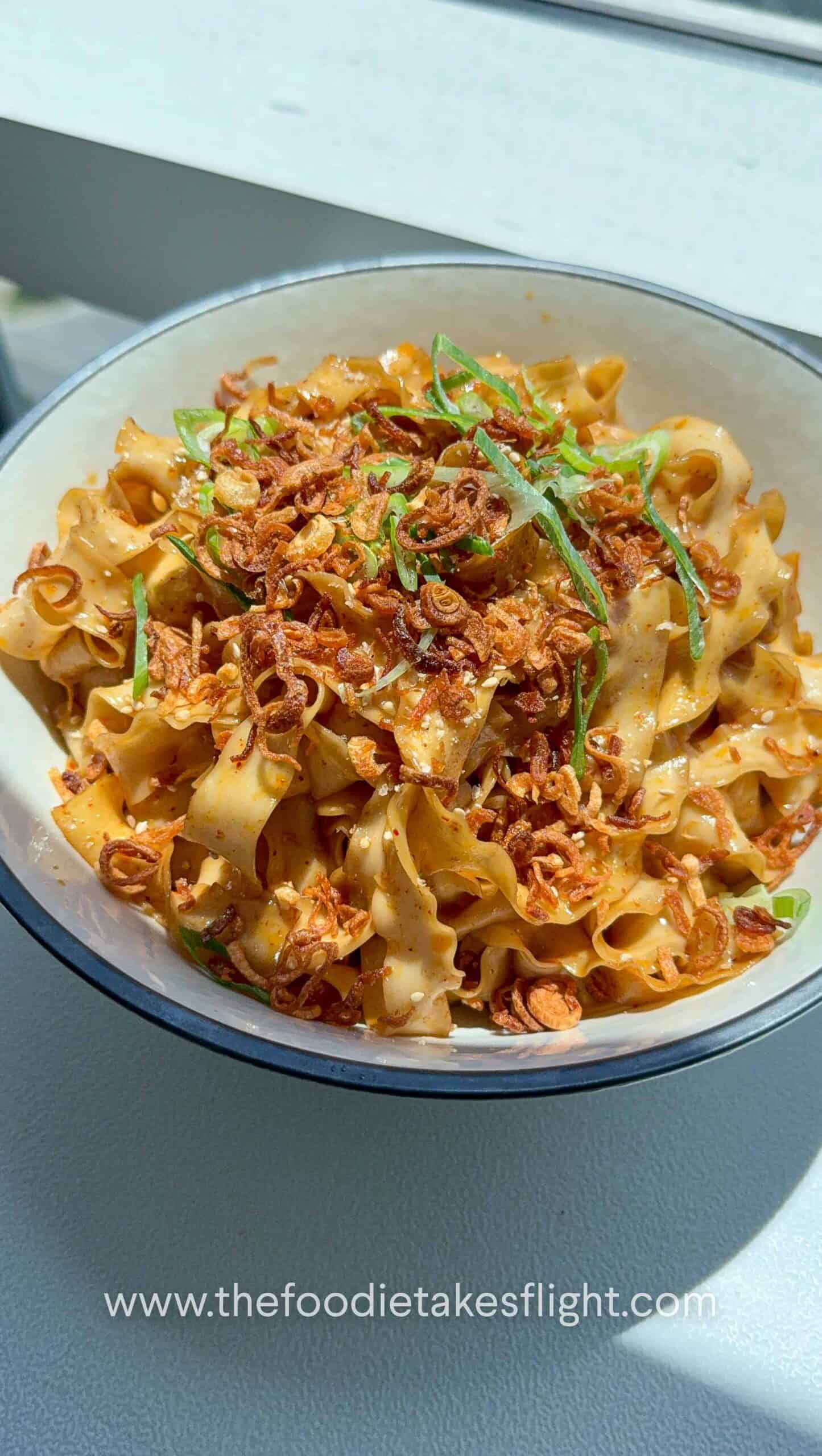
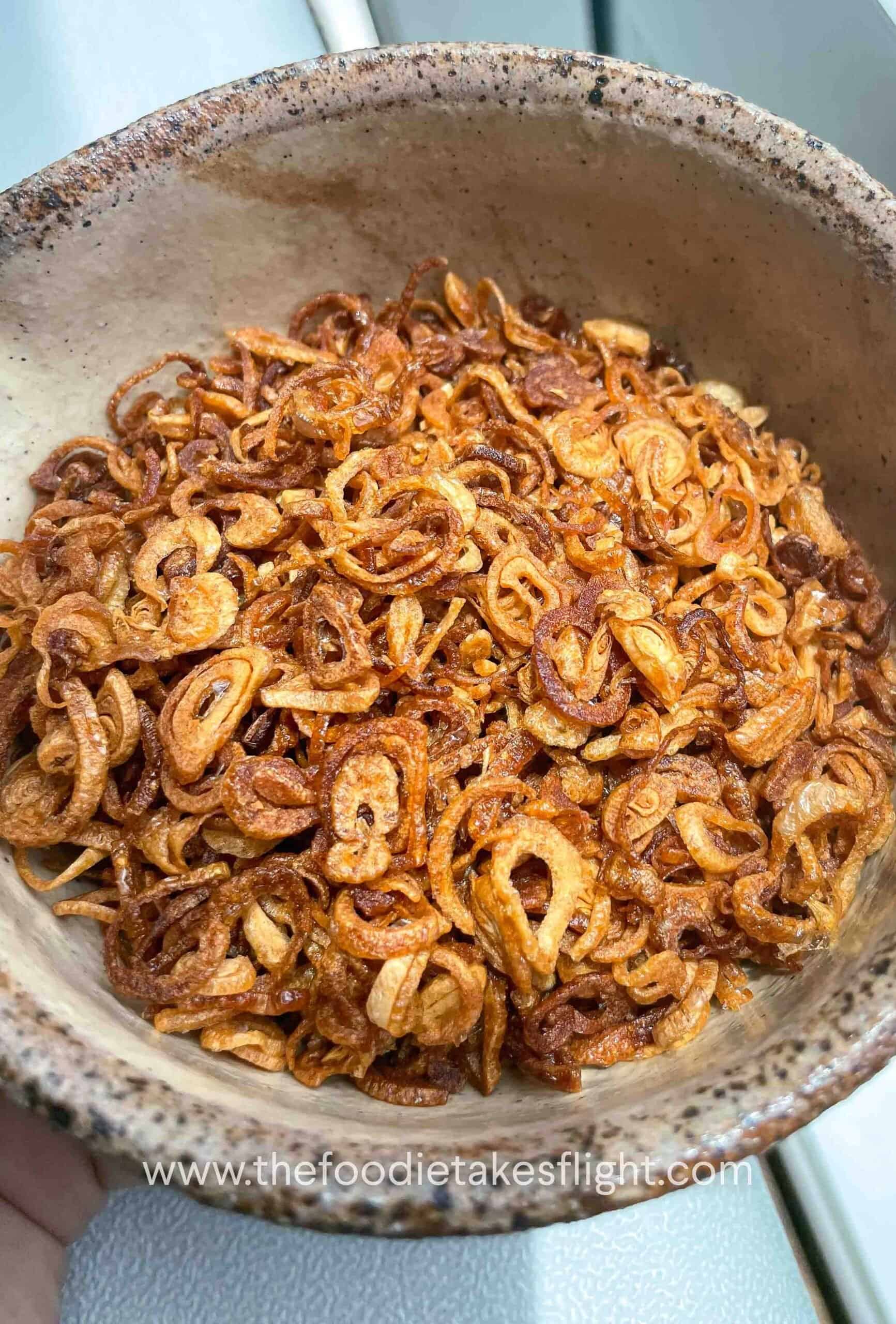
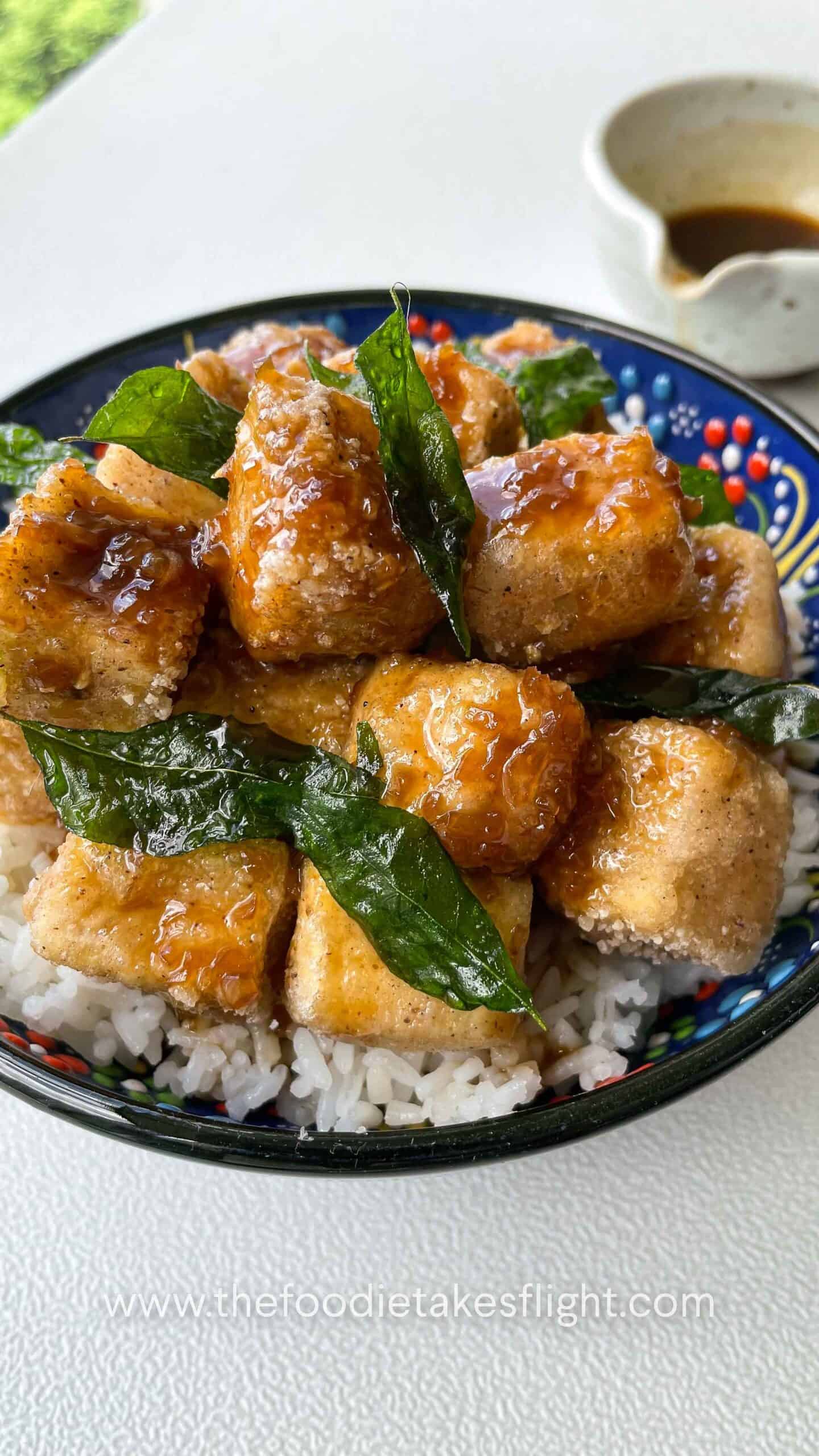
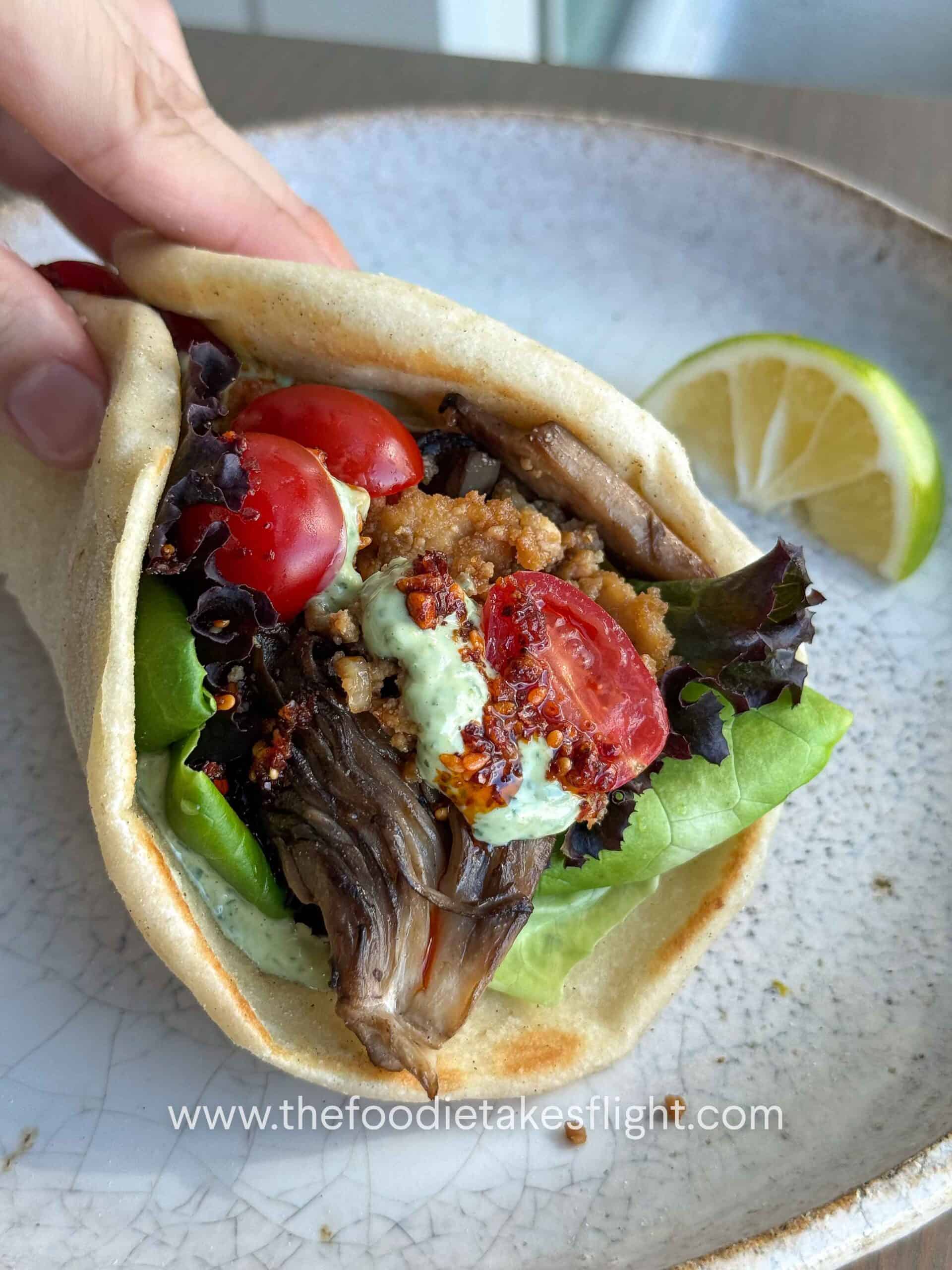
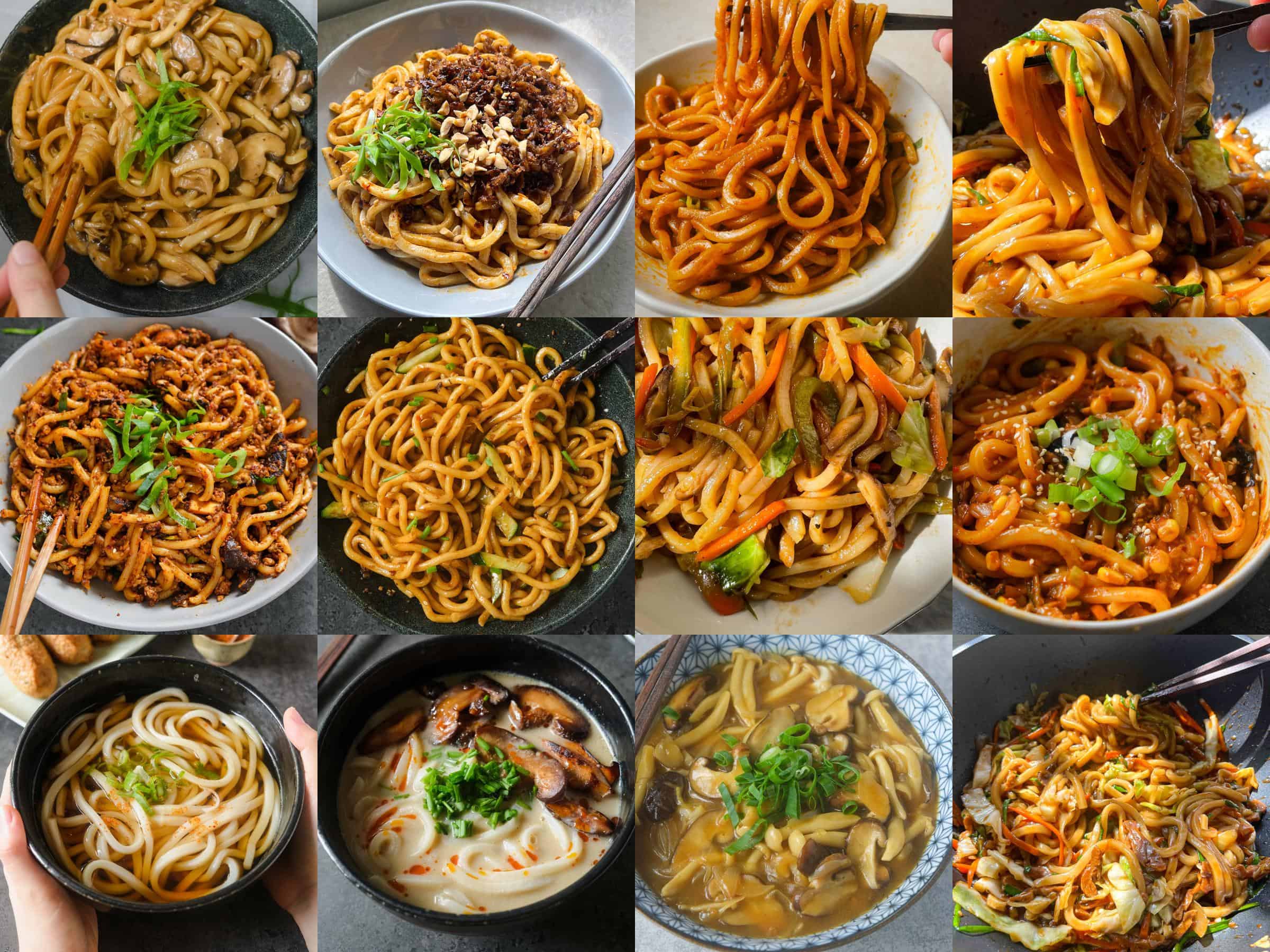
This Post Has 14 Comments
Loved it!
Thank you Kacey!!
I’ve tried this recipe last night and was blown away by how delicious it was! Absolutely loved it. This is definitely one of my favourite meals now! Thank you so much for the recipe.
Hi Noah, so happy you liked it!
Do you think i can also put potatoes in it? I will freeze my tofu also to have a meaty texture. Thanks.
Yup! I actually have another adobo recipe that has potatoes in it. You can check it here – https://thefoodietakesflight.com/vegan-filipino-adobo
Hello, if I won’t be able to find vegetable cubes/stock, could there be an alternative that you can recommend? Thank you so much!
I’ve been a long time fan of your Tokwa Sisig and I just can’t wait to try this one out!
Hi Faye! You can use mushroom water (from soaked shiitake mushrooms) instead and add the mushrooms with the tofu. ◡̈
This exceeded my expectations, and I will definitely make it again.
Yay happy you liked it! ◡̈
Delicious! I made a pork adobo for my meat eating folks (myself included) & this tofu adobo for my veggie peeps, & this was even more delicious than that was! I highly recommend this recipe. I did add some fresh pineapple just because I had it on hand— no regrets there, though I sacrificed some points of authenticity. Still, with or without pineapple, I will be making this recipe again!
Hi Brooke! Glad you liked it and thanks so much for giving it a try! I can imagine how pineapple gives the dish that extra sweetness! We have some Filipino stews/dishes where we actually add pineapple to and they taste great hehe
This is one of our favorite dishes! Absolutely delicious. We often add bell pepper.
Ooh bell pepper is something I’ve never tried in adobo! Will have to try it one of these days 🙂